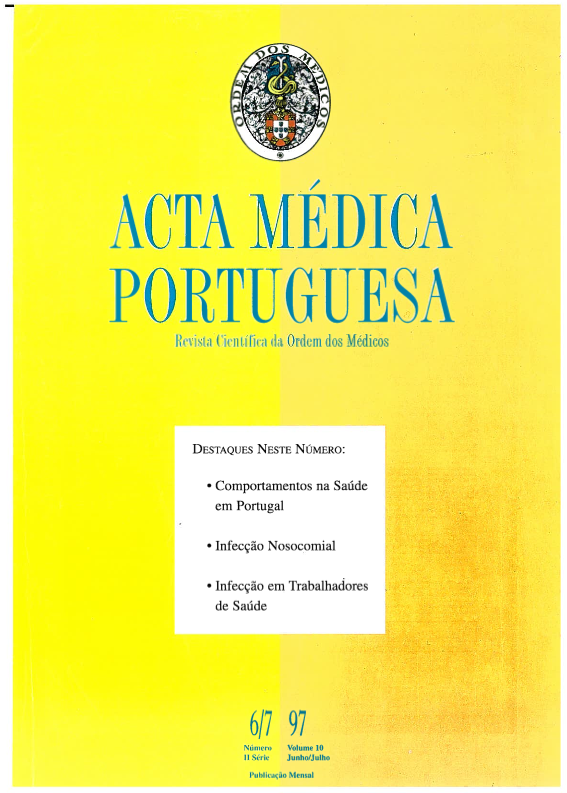Seroprevalência de anticorpos para o vírus da hepatite E na região Norte de Portugal (numa população de dadores).
DOI:
https://doi.org/10.20344/amp.2450Resumo
The authors have undertaken a study in the north of Portugal in what concerns the prevalence of antibodies for HEV donors. This study was transverse through observation and survey. A sample of 1.473 donors was randomly selected from among the population of donors of the Oporto Regional Blood Centre. This sample was representative of the northern region and stratified by district. The usual EIA method has been used to search for HEV antibodies. The results, which were repeatedly reactive, have been confirmed by Western Blot. The prevalence of antibodies for Hepatitis E was 2.5%. The test identified a possible cohort effect and the sample showed that the average age of the donors with or without antibodies was identical. No difference was observed regarding sex, distribution by districts or the presence of antibodies for HB virus. Hepatitis E is benign, without chronic state carrier and almost every patient presents acute symptomatology. The value of prevalence found as well as the absence of clinical symptomatology in the observed donors and the normal state of the hepatic markers, indicate that the use of blood and components obtained from this population should not be a problem. The recommendation proposed by the European Council does not mention the systematic research of HEV. However the epidemiological HEV survey is considered important from the transfusional point of view and as an indicator of the sanitary development of the population. Bearing in mind the developing status of Portugal in this area, it is of utmost importance to create the means to reach European standards.Downloads
Downloads
Como Citar
Edição
Secção
Licença
Todos os artigos publicados na AMP são de acesso aberto e cumprem os requisitos das agências de financiamento ou instituições académicas. Relativamente à utilização por terceiros a AMP rege-se pelos termos da licença Creative Commons ‘Atribuição – Uso Não-Comercial – (CC-BY-NC)’.
É da responsabilidade do autor obter permissão para reproduzir figuras, tabelas, etc., de outras publicações. Após a aceitação de um artigo, os autores serão convidados a preencher uma “Declaração de Responsabilidade Autoral e Partilha de Direitos de Autor “(http://www.actamedicaportuguesa.com/info/AMP-NormasPublicacao.pdf) e a “Declaração de Potenciais Conflitos de Interesse” (http://www.icmje.org/conflicts-of-interest) do ICMJE. Será enviado um e-mail ao autor correspondente, confirmando a receção do manuscrito.
Após a publicação, os autores ficam autorizados a disponibilizar os seus artigos em repositórios das suas instituições de origem, desde que mencionem sempre onde foram publicados e de acordo com a licença Creative Commons









